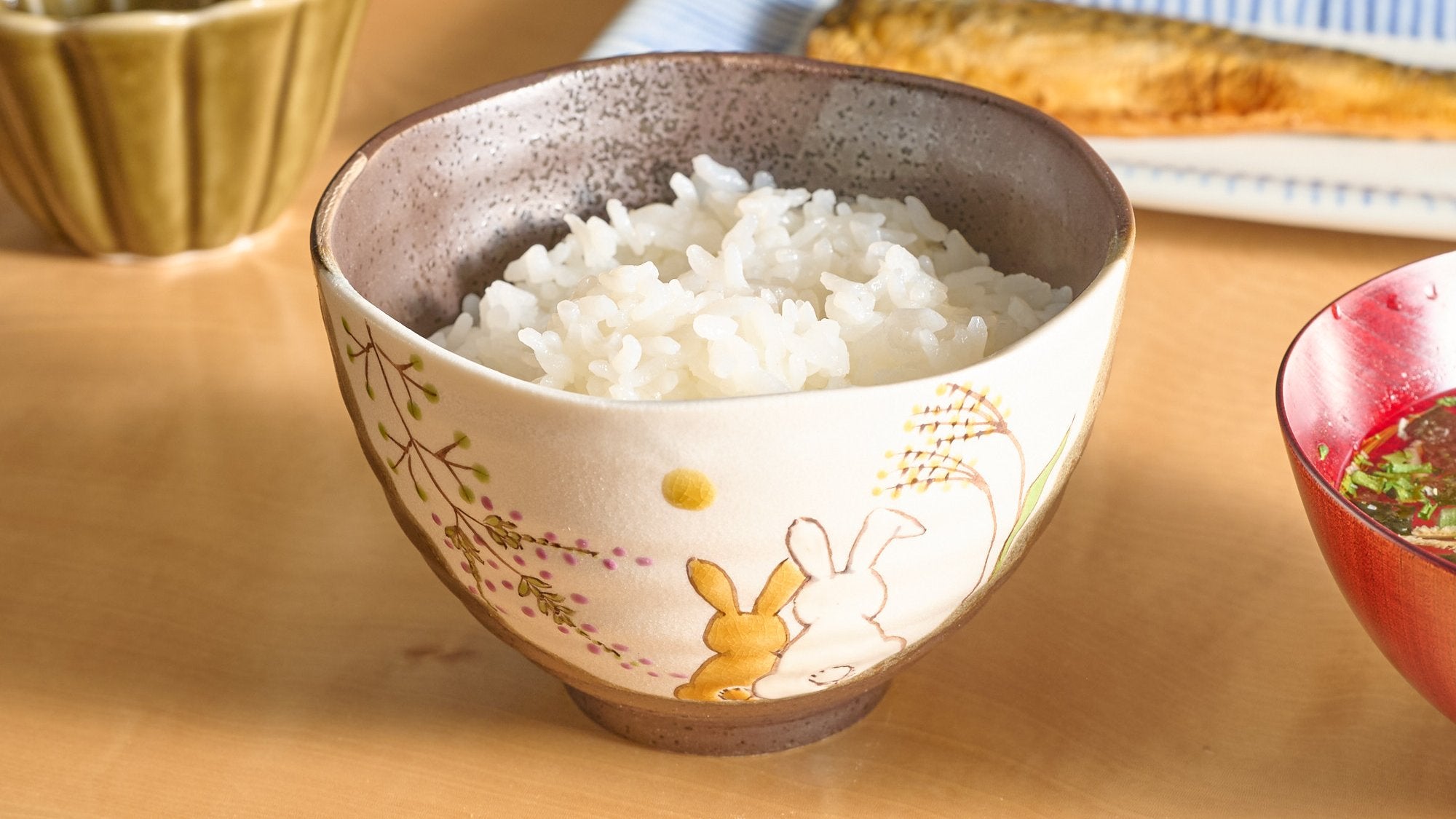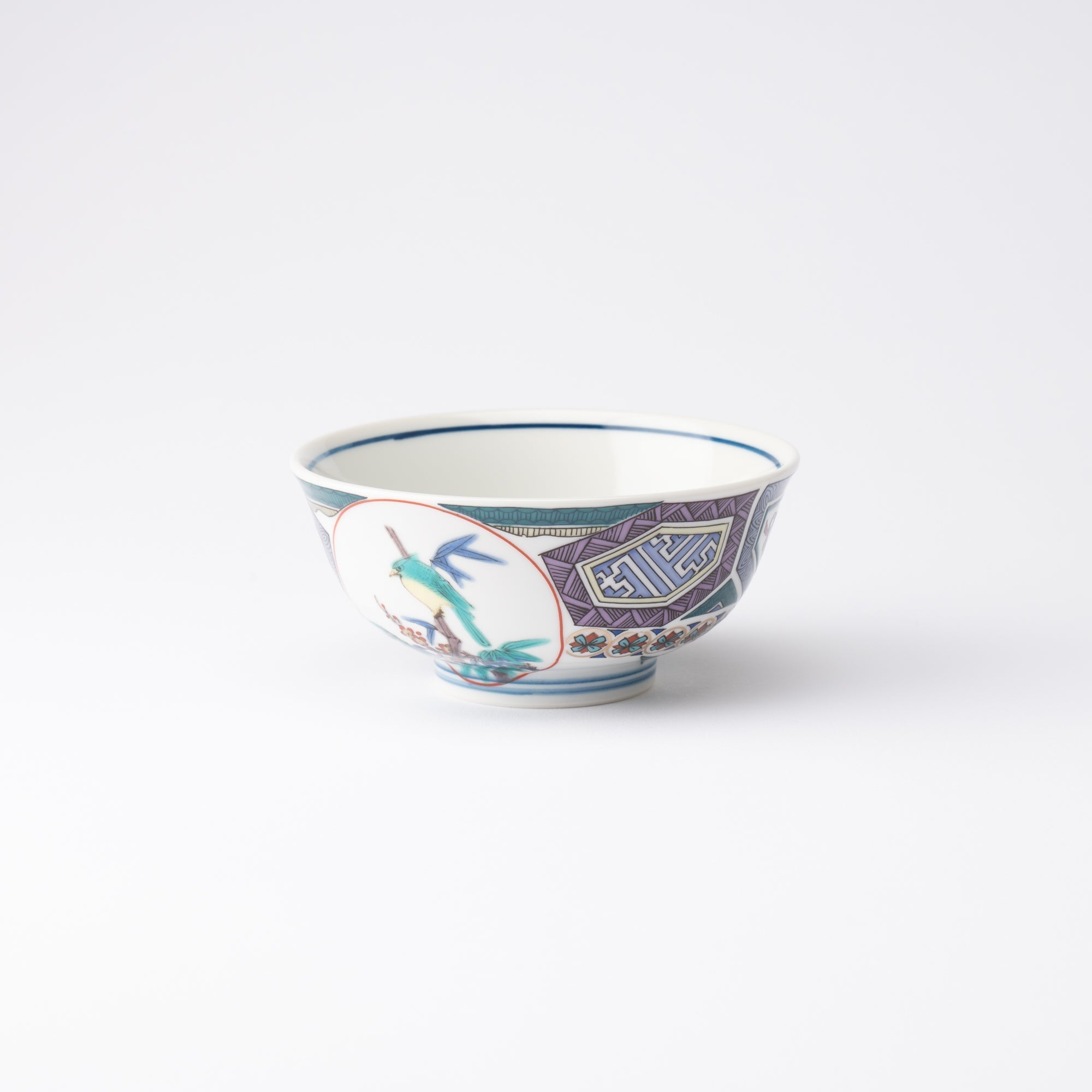
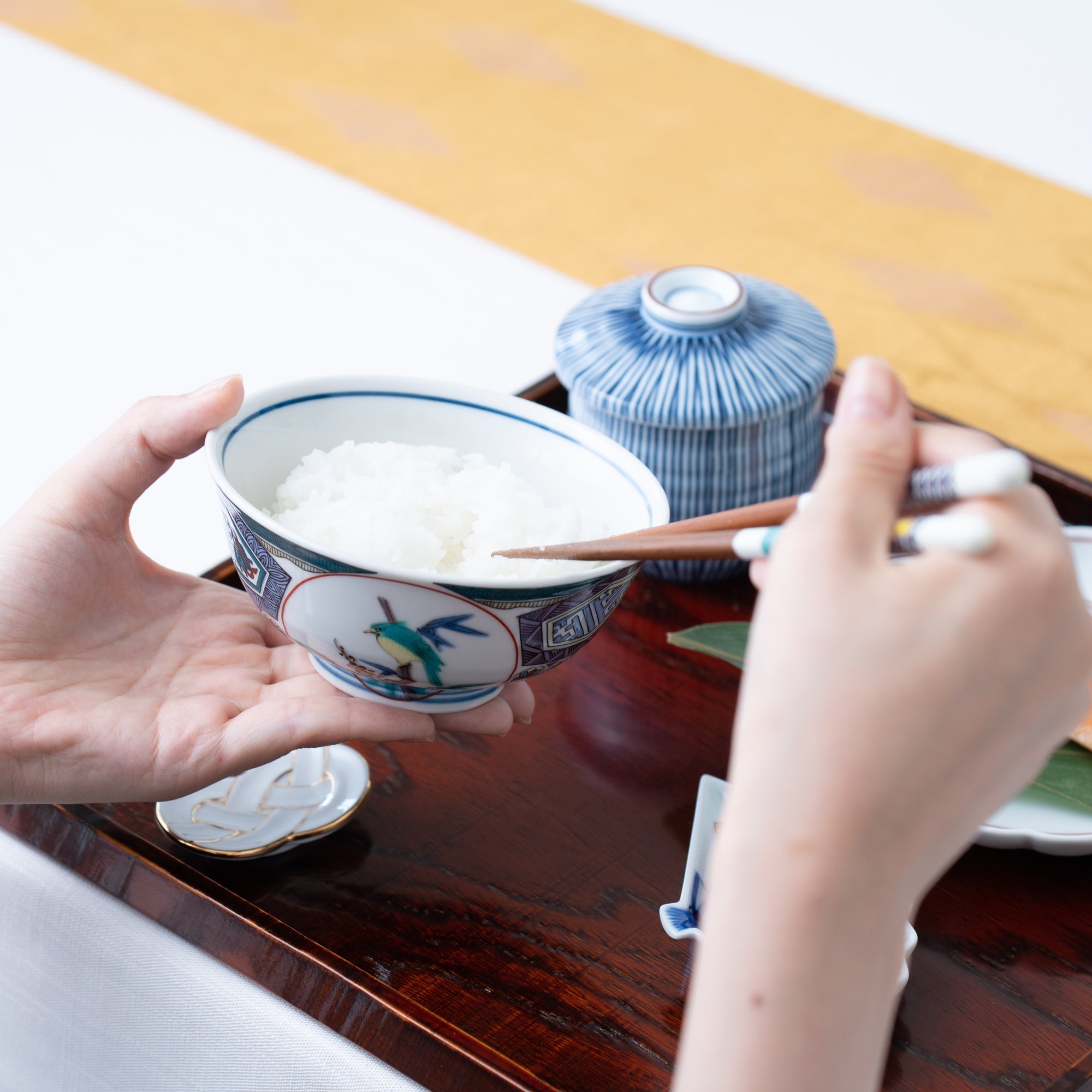
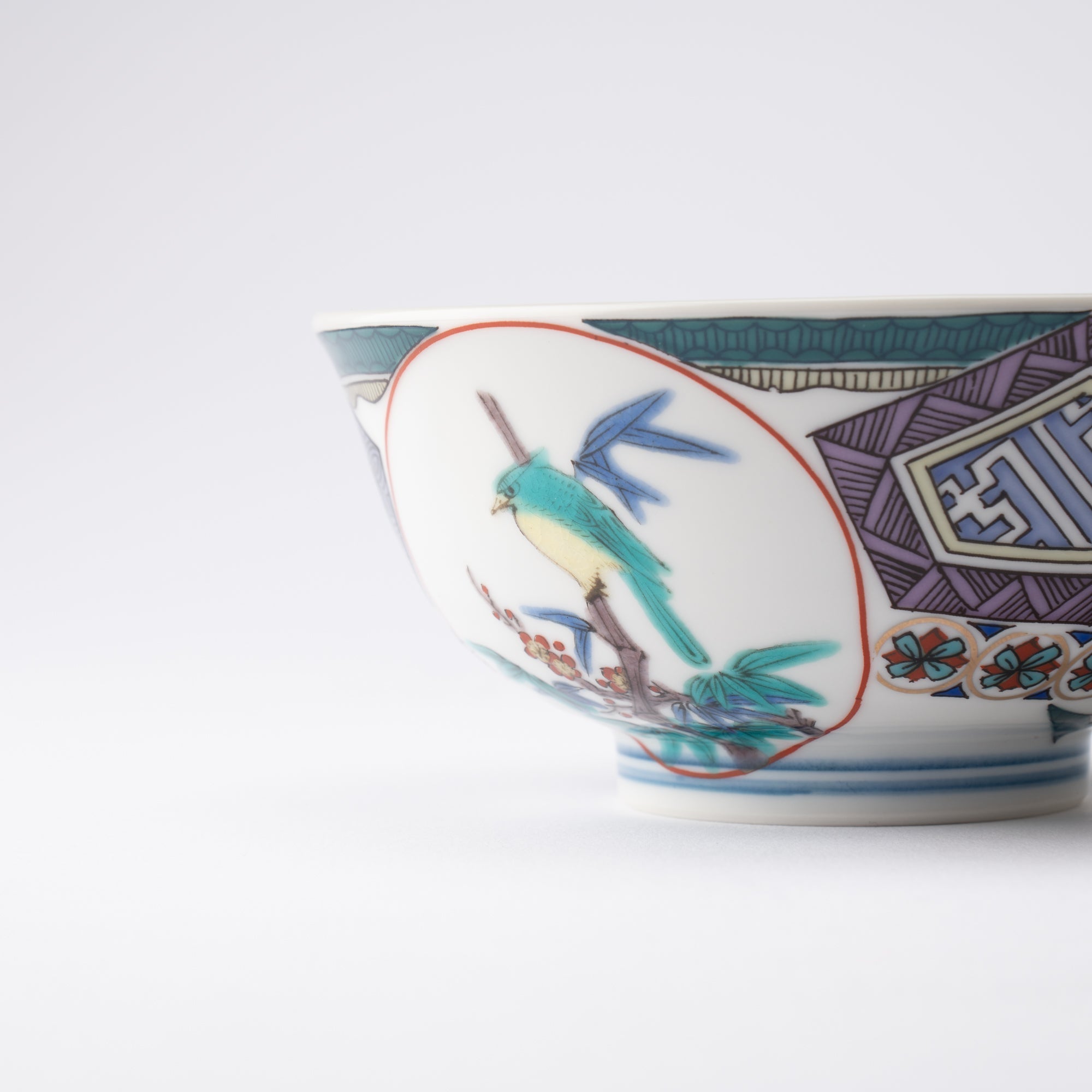
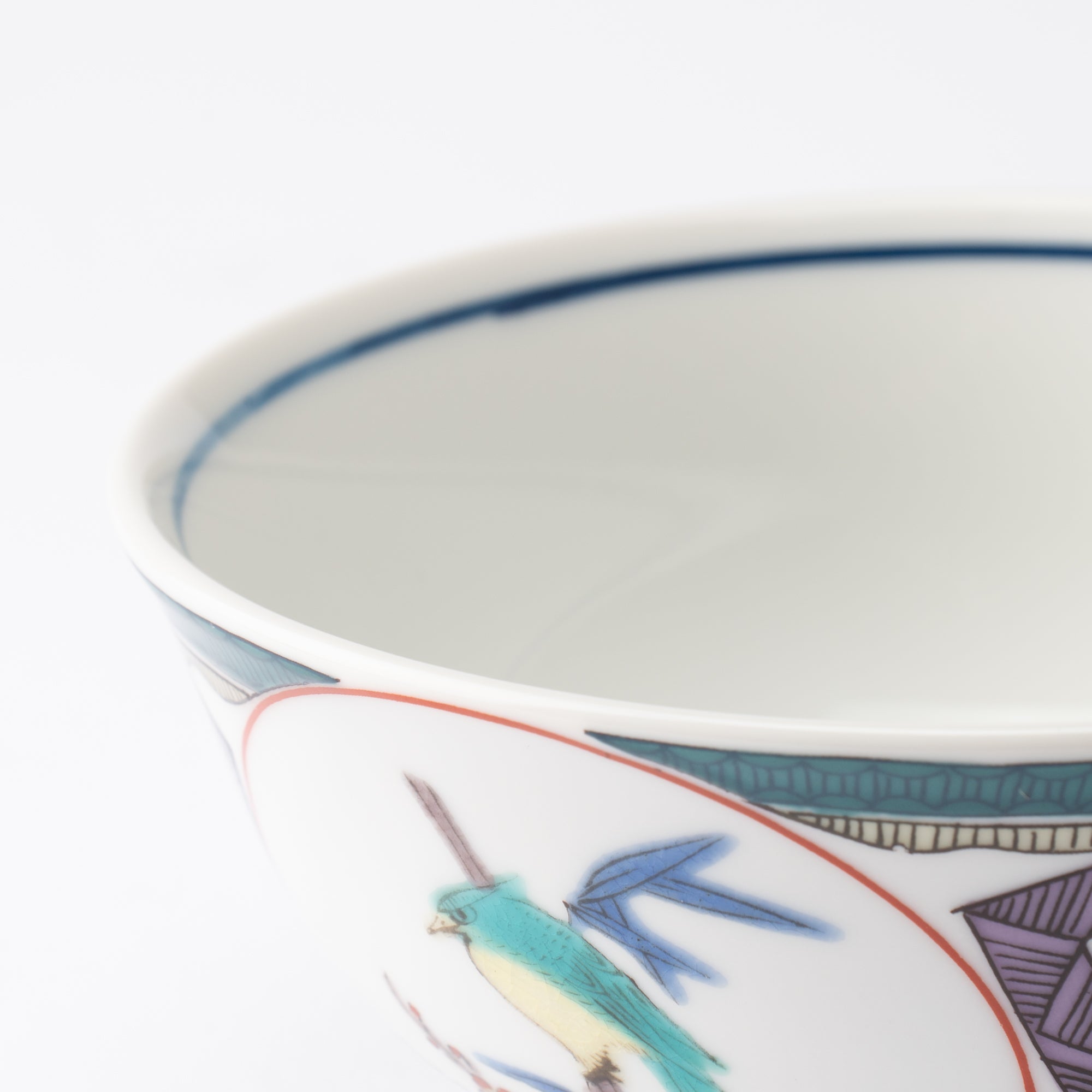
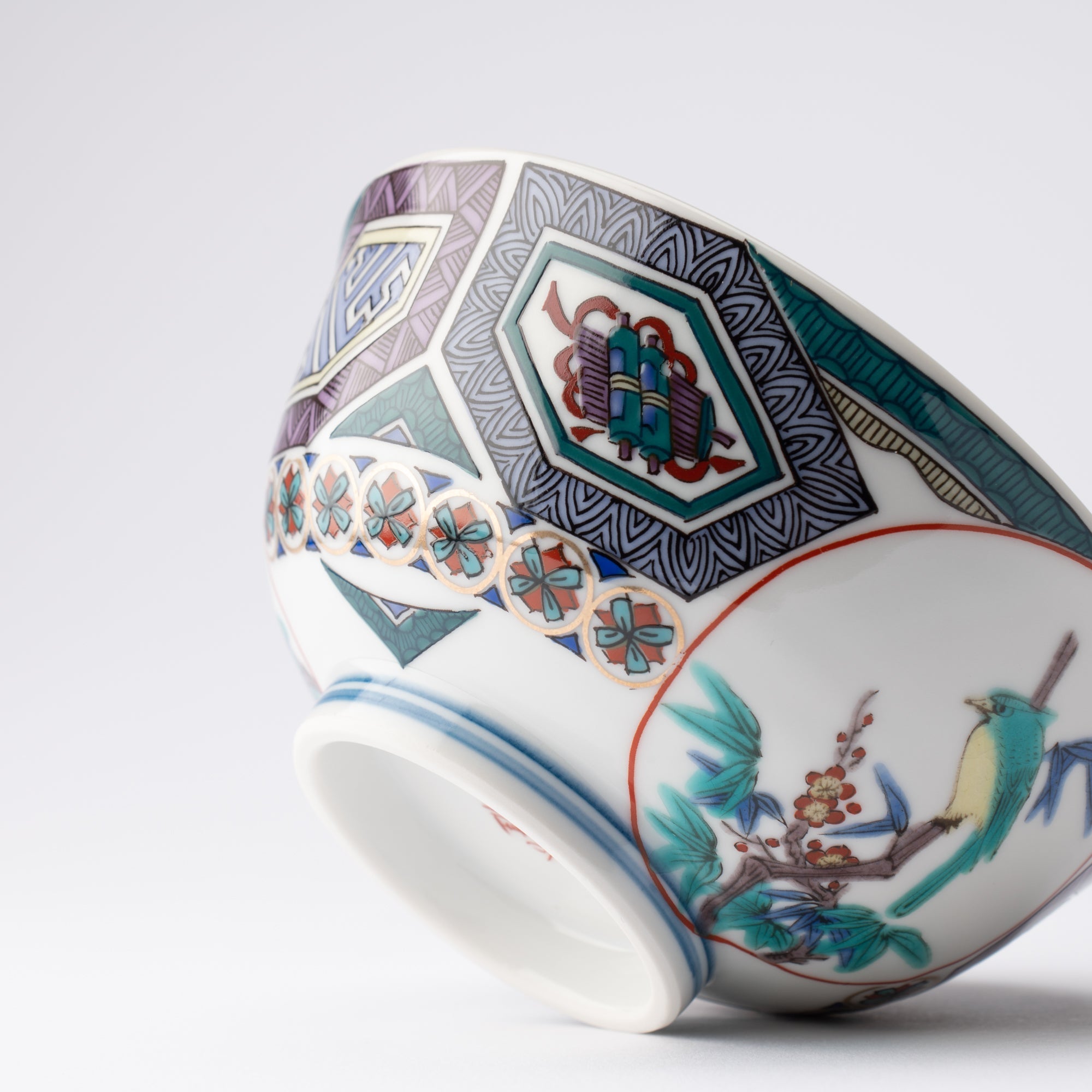
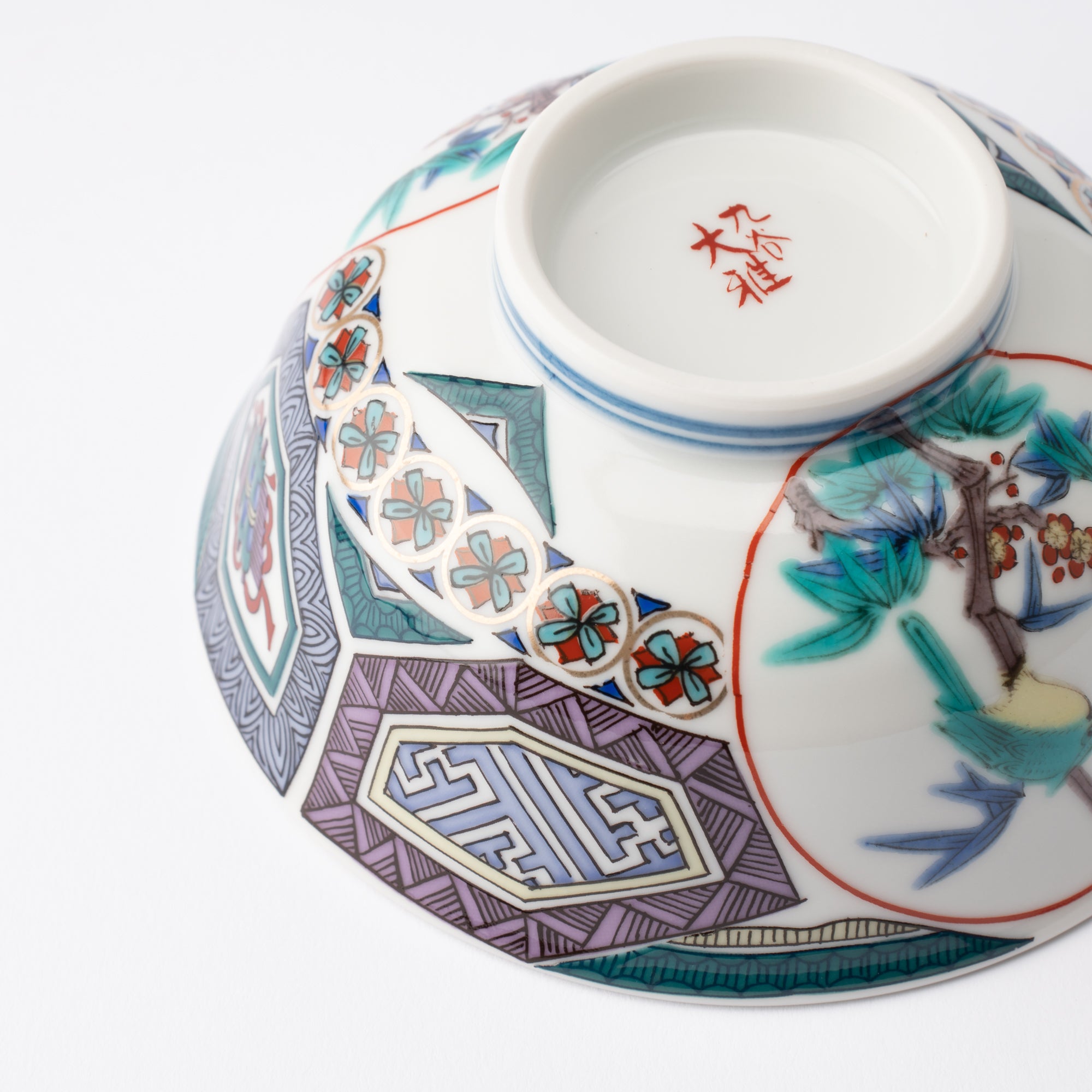
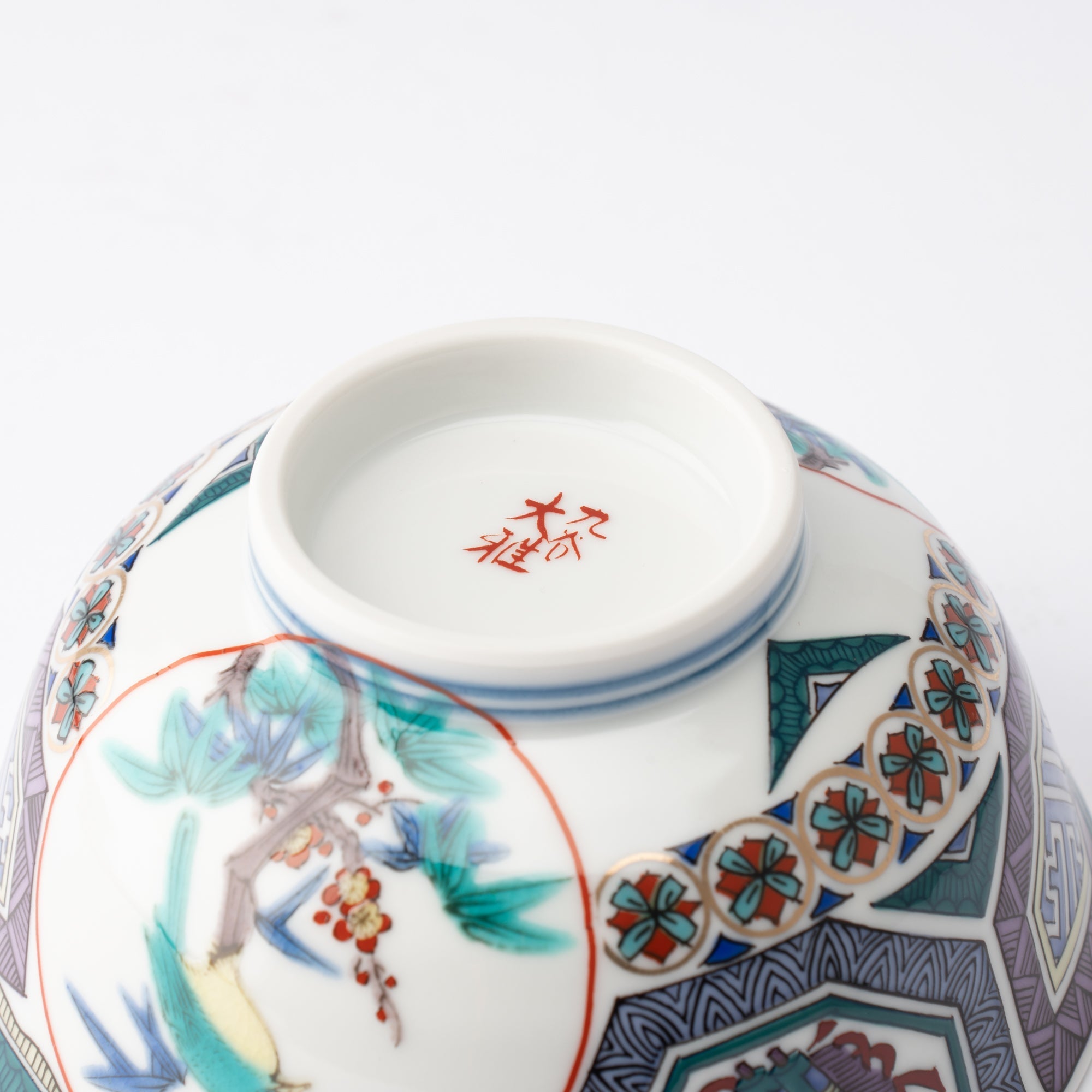
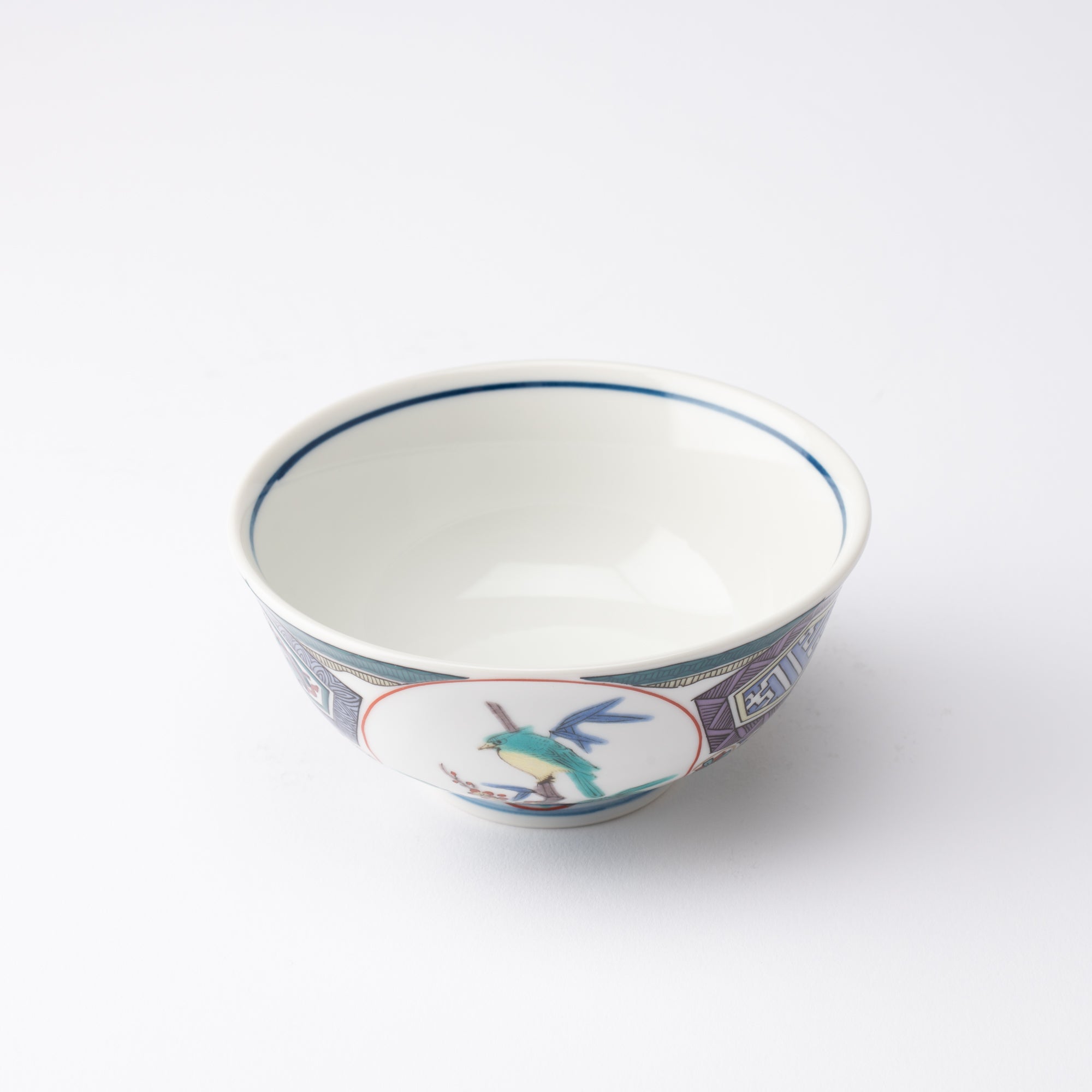
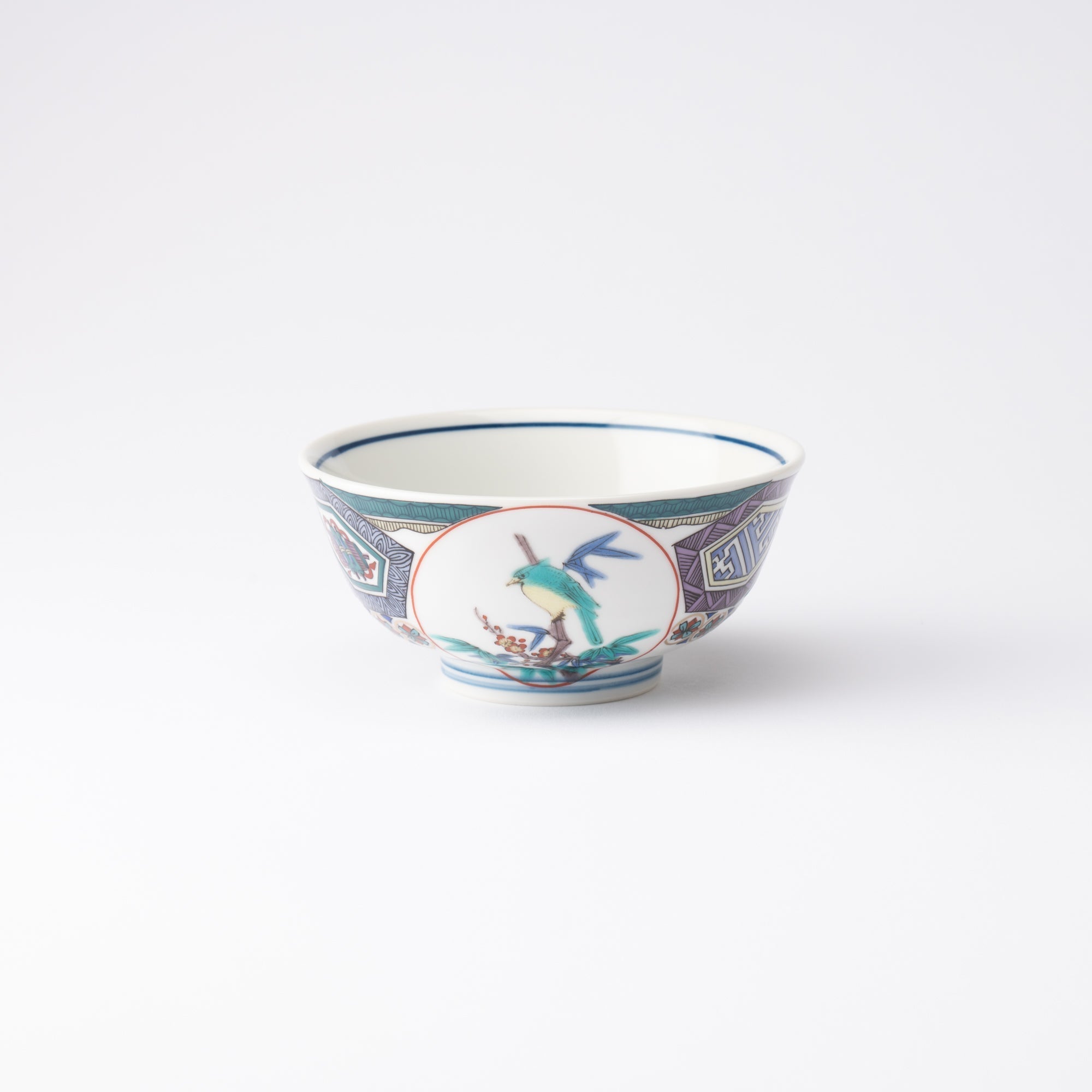
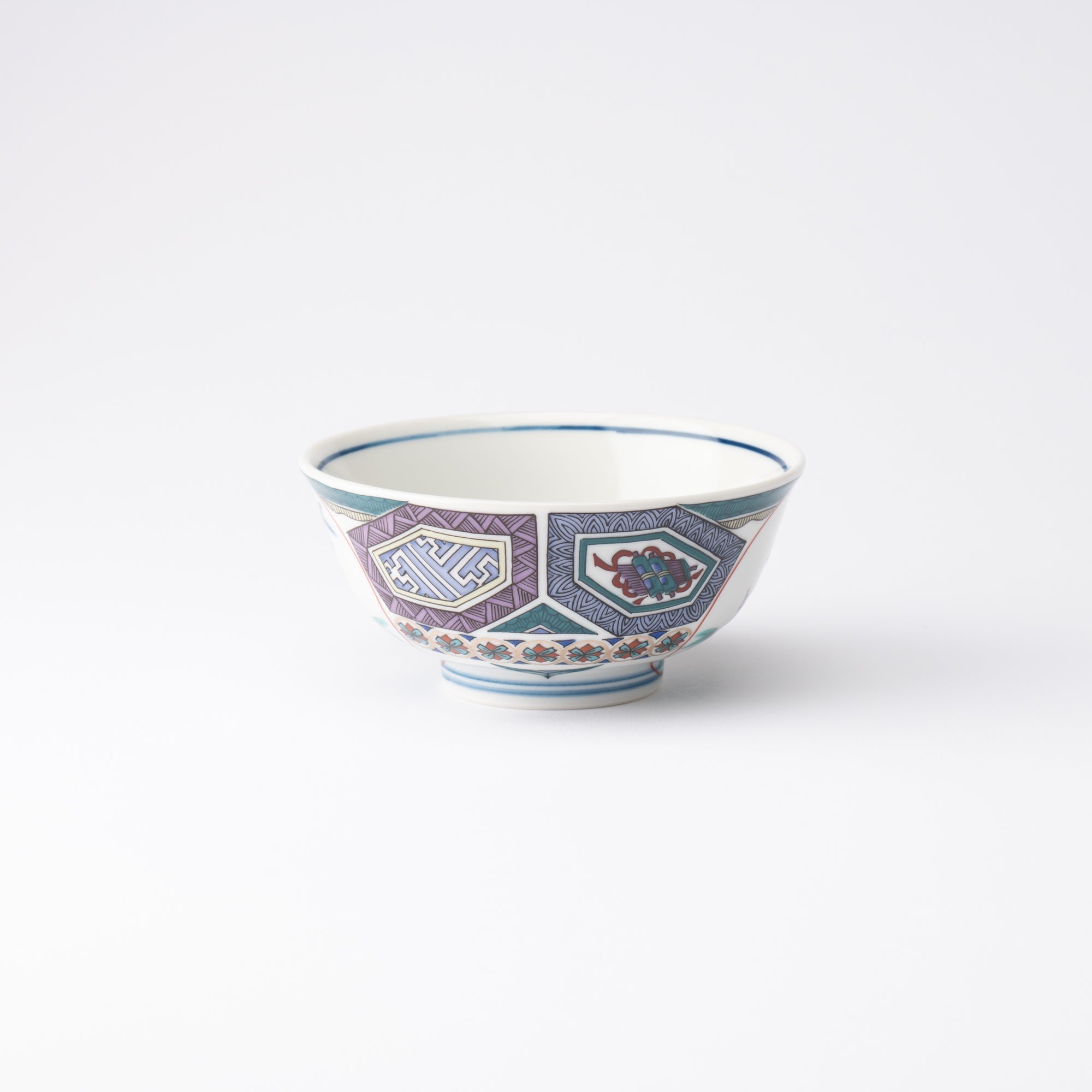
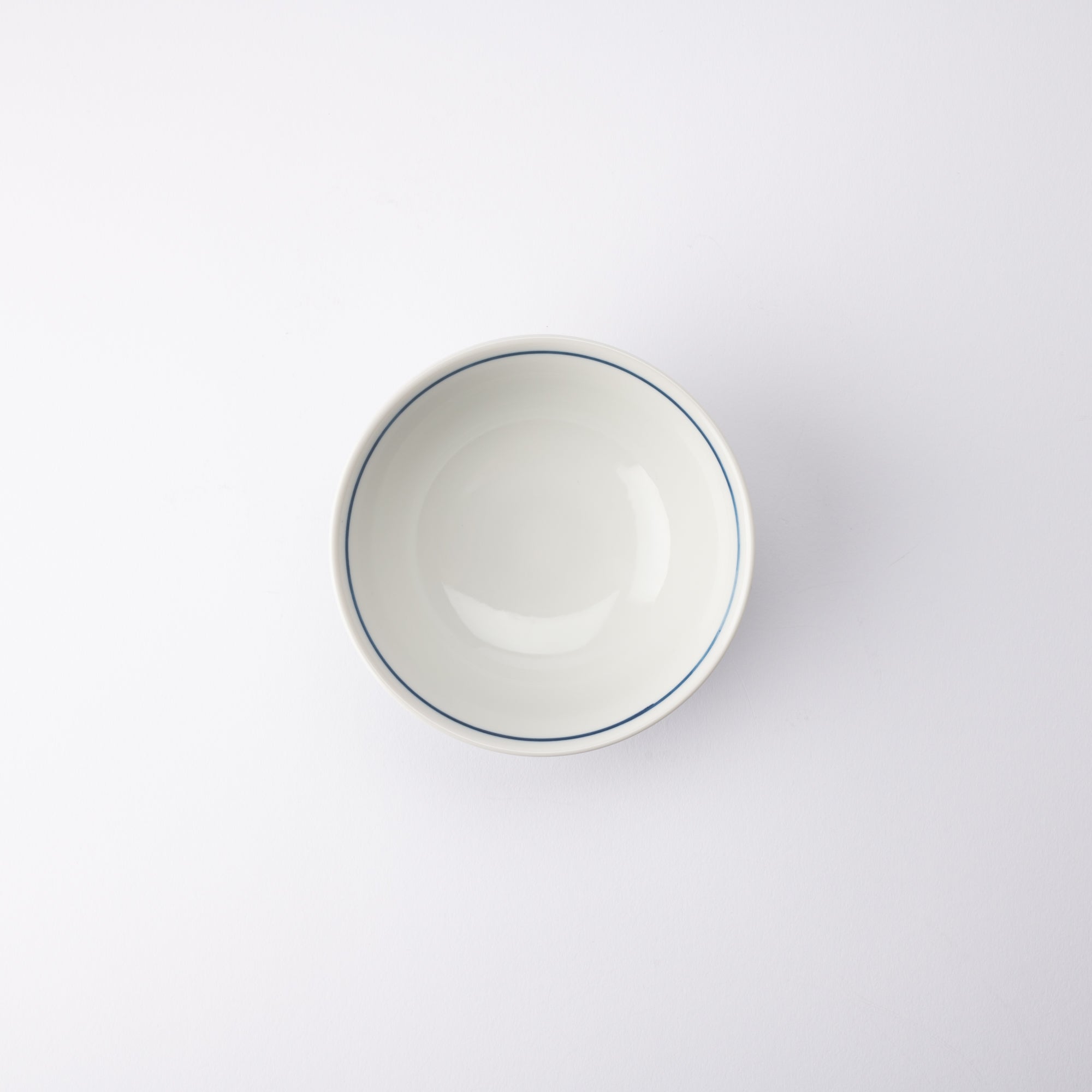
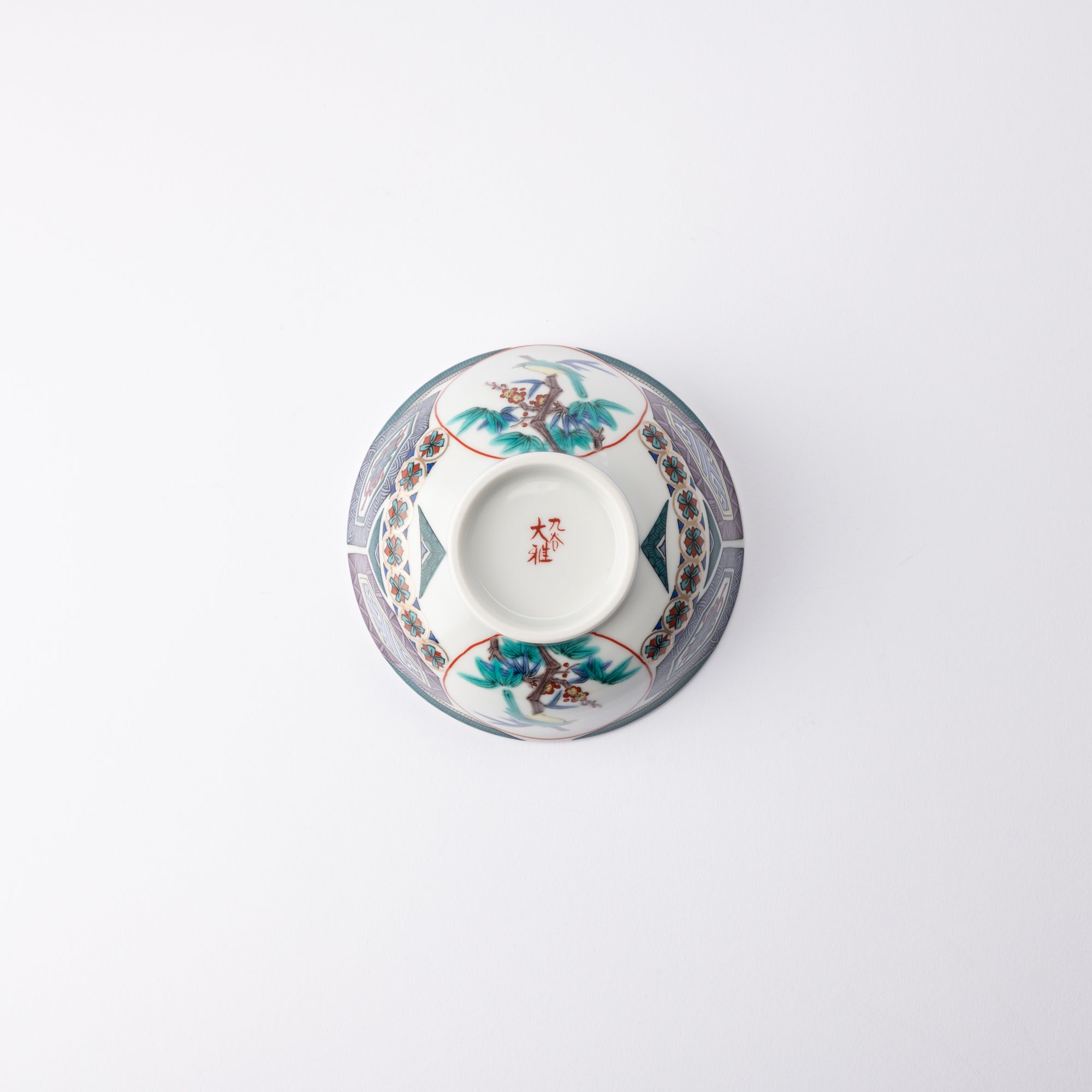
Bird Japanese Rice Bowl
Estimated Shipping Widget will be displayed here!
This Japanese rice bowl has a typical design of the ko-Kutani style dating back to the mid-17th century, depicting the nature-themed motif and traditional patterns and distinctive bright colors of Kutani ware.
It is painted with the five colors of red, yellow, green, purple and dark blue, known as gosai in Japanese. Kutani ware uses a brush for painting with Japanese coloring paint, as you can see the painted bird and flowers are slightly thickened and standing out.
This rice bowl is an excellent choice for daily use at the dining table. Also, the gorgeous design makes it perfect for use at festive occasions.
Kutani Ware is recognized around the world as "Japan Kutani" and has been renowned for its quality. The charm of Kutani ware lies in its unique layered colors (red, green, yellow, purple, and navy blue), which give the porcelain a sense of dignity. The traditional craft of Kanazawa, Ishikawa Prefecture, which boasts a history and tradition of about 360 years, adds vivid color to everyday life.
DETAILS
| Quantity | 1 |
| Size | D 12.5 cm (4.9 in) x H 6 cm(2.4 in) |
| Material | Porcelain |
| Microwave | Yes |
| Dishwasher | Yes |
Crafts
Kutani ware is a pottery produced in the Kaga region of Ishikawa Prefecture, with a history spanning over 350 years. It is characterized by the heavy brilliance of the five colors of navy blue, red, purple, green, and yellow that are applied to the bold and daring lines. Its long history has evolved through the tireless efforts and enthusiasm of people who have sought innovation while maintaining tradition.
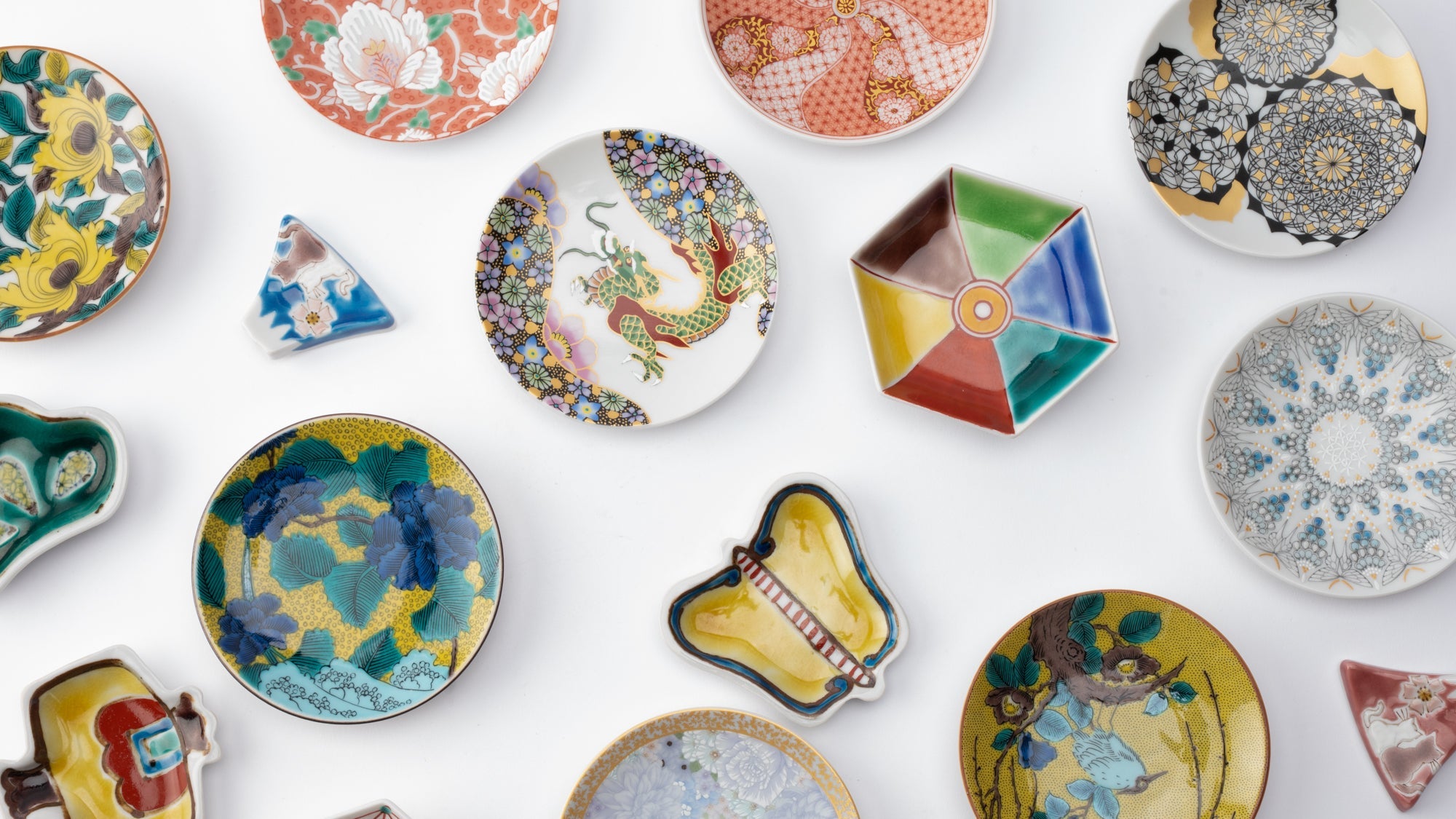
Choose options












Rice Bowls
Rice bowls are indispensable tableware for the Japanese dining table. Since they are used so often for Japanese food, many people are particular about them. It is important to choose one that is not only beautiful to look at, but is also the right size for your hand and easy to hold.
We recommend that you get a dedicated rice bowl for each member of your family. It's also a good idea to have a few available for different occasions, in varying colors and patterns that match the season and table setting.
